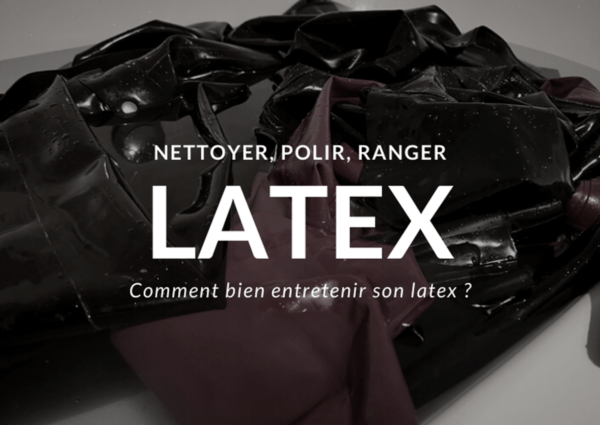Piscivorous is equivalent to the Greek-derived word ichthyophagous. These snakes can be differentiated via their pupils and lip markings. Watersnakes (members of the genus Nerodia) are similar sized snakes with like colors that inhabit similar environments. Cottonmouth venom is mainly composed of hemotoxins that break down blood cells, preventing the blood from clotting or coagulating, according to Viernum. Cottonmouth snakes (Agkistrodon piscivorus) are named for their pale white mouths. These sensors help them detect infrared radiation, essentially heat, from about a yard away. He said poison control ruled out a water . by Dale Grubaugh. They may be active during the day and at night. Cottonmouths rarely stray far from water. do water moccasins stay in one area? Cottonmouths will venture overland and are sometimes found far from permanent water. They are usually brown or yellowish with horizontal bands along their body. Psychological Research & Experimental Design, All Teacher Certification Test Prep Courses, Orders Eulipotyphia, Chiroptera & Didelphimorphia, Arboreal Habitats: Characteristics, Types & Examples, What is an Arboreal Snake? Home | About | Contact | Copyright | Report Content | Privacy | Cookie Policy | Terms & Conditions | Sitemap. Juveniles have bright banded patterns on their bodies and a bright yellow tail tip. For more information, go to my BODY SIZE THICK, HEAVY BODIES: Venomous Water Moccasins have bodies that are VERY thick and heavy for their length, and short, thick tails. Many nonvenomous snakes can flex their jaws resulting in a more triangular shape. Their coloration varies from dark brown or black to olive, banded brown or yellow. The cottonmouth is also known as the water moccasin, and both names are completely interchangeable. Youll see this in longer water moccasins, around 4 feet long, because these are the older specimens. Northern water snakes are often seen swimming near the shoreline or in open water, or basking on the bank or in a tree, shrub, or log protruding over water. On the whole, they are not petite snakes. Theyll hunt for fish in shallow waters. Dogs, cats, raccoons, wild pigs, and other mammals occasionally prey on juvenile water moccasin, but the most common mammalian predator of a water moccasin is the opossum. Water snakes may be banded like cottonmouths, or have patches that look similar to bands when observing them. Because these snakes frequently inhabit semi-aquatic habitats, they are often referred to as water moccasins, where a moccasin is a venomous pit viper native to the Americas. Precocial species are normall A burrow is a hole or tunnel excavated into the ground by an animal to create a space suitable for habitation, temporary refuge, or as a byproduct Natatorial animals are those adapted for swimming. Best ways to tell watersnakes and Water Moccasins apart: 1. Stay on open paths where there is an opportunity for snakes to be . 5. To unlock this lesson you must be a Study.com Member. It is suggested that Water moccasins are monogamous; this means that during the breeding season male mates with only one female. Cottonmouths (Agkistrodon piscivorus), also called water moccasins, are venomous snakes (opens in new tab) found in the southeastern United States. They prefer slow-moving waters like swamps, marshes and shallow ponds but can also be found near rivers and lakes. These specialized pits are able to detect minute differences in temperature so that the snake can accurately strike the source of heat, which is often potential prey. There are actually quite a few examples, and in some cases, both names are equally common. The cottonmouth has a very painful bite. Ovoviviparous means giving birth to live young, but their young develop inside them, inside eggs. Their diet consists mainly of fish, frog, crayfish, and shrimp. It is not possible to distinguish a venomous snake by the shape of its head, as nonvenomous snakes may be able to change their head shape in a defensive display. munich latitude compared to us; pro sun tan. Opossums are known for a rodent-like appearance and a fierce nature when it comes to killing their prey. Most snakes brumate over the winter. They're called cottonmouths because of the white coloration on the inside of their mouths, which they display when threatened. Juveniles may have less control over the amount of venom they use and are thus more likely to deliver a serious bite. Water moccasins are almost or even totally black, (with the exception of the head and facial markings), the color pattern may consist of a brown, gray, tan, yellowish-olive, or blackish ground colors, which is overlaid with a series of 10-17 dark brown to almost black crossbands. Theyll even eat other snakes, including other cottonmouths. But don't get too close, of course. Its less clear exactly why the water moccasin is named after a kind of shoe. These snakes are usually associated with bodies of water, such as creeks, streams, marshes, swamps, and the shores of ponds and lakes. until by the time they are 4-5 foot adults, they look like dull black slugs. Now that the meat is boiling, add in additional flavorings such as salt, pepper, rosemary. There is no online registration for the intro class Terms of usage & Conditions However, when agitated they may flatten their bodies and bite. What Do Southern Black Racers Look Like? You can also By Ezoic Ground Reptiles 17 Comments. Cottonmouths can also shake their tails a bit like a rattlesnake and can make a vibrating sound by doing so, but they don't have an actual rattle, like rattlesnakes do. The snake has dark vertical lines by each nostril and a pale snout and chin. Let the meat boil in the water. Heres how it works. Juveniles also have bright-yellow tail tips that they use as lure to attract prey. Bites can be effectively treated with CroFab antivenom; this serum is derived using venom components from four species of American pit vipers (the eastern and western diamondback rattlesnakes, the Mojave rattlesnake, and the cottonmouth). Cottonmouths are venomous snakes native to the southeastern United States. The males also fight each other when competing for females. However, Water Moccasins are not easily provoked and will leave you alone unless they are cornered. Its the internal bleeding thats the worst, though. Water moccasins indeed possess fangs that assist them in administering their toxins. You can make a reservation through Reserve America. The inside of the snake's mouth is a very . "They undulate the tail tip slowly back and forth to lure prey, such as frogs (opens in new tab), within striking distance," Viernum said. Non-aquatic snakes will do the same, but with their head poking out of the top of the water. 302 lessons. Like all snakes, they eat mammals and birds, as well as small amphibians (frogs and toads). Eventually, their top becomes a ruddy black, and their underside becomes whiter. A water moccasin is a type of pit viper found in the southeastern United States. 2023 SnakesForPets.com. This membrane sits inside a tiny, hollow bone chamber that allows it to detect even very small changes in warmth. When possible, identify or get a description of the snake that caused the bite: It can affect the choice of antidote. This species prefers low-lying areas. 1 / 4. 1. Snakes serve a . Cottonmouths occur in most southeastern states. Water moccasins are venomous, but many lookalike snakes arent. Even though they can be seen sunning themselves during the day, they are the most active at night. The markings and coloration of water snakes vary somewhat from species to species, but for the most part they are brown, gray, olive green or reddish with dark splotches or bands on their backs. When startled, these snakes may take off quickly towards a potential hiding place. To make your snake soup, all you need to do is just boil up a pot of water and throw in the chunks of snake meat into it. This comes from the Latin piscis, which means fish, and voro, which means eat greedily. Thats why I set up snakesforpets.com to answer every question that you could ever have about snakes as pets (and how they survive in the wild.) Because cottonmouths regularly hide, they may be found accidentally when flipping logs or moving material. The venom of the Water Moccasin is very toxic and kills its victims by causing a hemorrhage at the site where the poison is injected. Terrified by their fearsome reputation, observers attribute almost any behavior a cottonmouth makes as "aggression" and a strong desire to bite anyone who comes near. Most snakes are able to emit a musk from their scent glands when they feel threatened, and copperheads are no exception. To understand how to differentiate between cottonmouths and watersnakes, it is first important to debunk common myths about venomous snakes. They are relatively large and thick-bodied, variable in color, and generally range between 3 and 5 . The territory of a cottonmouth snake is a little over a hectare and includes the body of water. They'll lay their eggs there and most species will then leave them, never to interact with their young again. During the mating process, males slither around, waving their tails to lure females away from other male suitors. Water Snakes are very agile climbers and spend a great deal of time basking on the limbs of shrubs and trees overhanging the water. Cottonmouths mate in spring, usually from April to May. This is the world's only semiaquatic viper, usually found in or near water. Many of their common names, including "cottonmouth" and "gaper", refer to this behavior. You could walk right past one of these docile snakes without knowing it as they often lay motionless and quiet to avoid being seen. Plains Milk Snake. They primarily live in aquatic and wetland habitats, including swamps, marshes, drainage ditches, ponds, lakes and streams. Fewer Rodents and Birds Than Before Snakes can't eat anything except other animals. What is unique about the Water Moccasin is that it is in the family of pit vipers and because of this they have heat sensors in their eyes and in their noses. Their pupils are vertical, similar to cat pupils, and they have dark stripes next to each nostril. Venom takes a considerable amount of resources to produce, and thus cottonmouths are not keen to waste venom on something other than a meal. Sure they are around but unless you turn over a bunch of rocks around the lake bank, they won't appear; and if they do appear, moccasins are normally not aggresive unless they feel endangered. Only if a cottonmouth is pursued further will it attempt to bite. Absent an anaphylactic reaction in a bitten individual, however, the venom does not cause systemic reactions in victims and does not contain neurotoxic components present in numerous rattlesnake species. The quick and easy way to identify a water moccasin is to look for its wedge-shaped, blocky head (from above, as in a boat, you cant see its eyes), check for the heat-sensing slits beneath and between its eyes and nose, and note its olive, dark tan, dark brown or an almost black body, thick and python-like in its . 1. As these snakes age, their patterns diminish with some older adults appearing nearly black on their backsides. A triangular head with slit-shaped pupils and fangs. Theyll stop eating, moving around, and mating during this time. The Step 2 of 3: Add The Spices. There are a few ways you can tell a nonvenomous water snake from a venomous water moccasin, or cottonmouth, according to the University of Florida (opens in new tab). Water Moccasins also have elliptical pupils, whereas non- venomous Water Snakes have round pupils. Cottonmouths, known scientifically as Agkistrodon piscivorus, are a venomous pit viper that lives in the southern and eastern parts of the United States. They are venomous as well, if bitten you should get to a hospital ASAP. The Water Moccasin does not have very many predators; in fact most predators leave this snake alone because its venom is so poisonous. There are no major threats to Water moccasins at present. Cottonmouths are carnivores and only eat meat. Venomous is a term used to describe animals that are capable of injecting harmful chemicals. Cottonmouth snakes have slit-shaped pupils, dark bands behind their eyes, and plain upper lips. Females have a gestation period of five months. Cottonmouths may retreat to shelter when they feel threatened and thus prefer habitats with a good number of hiding places. Brumation is similar to hibernation, where the snake enters a period of low activity. It is delivered in a bite, sting, or similar action. They have thick bodies and can grow up to six feet long, though two to four feet is more common. Water snake pupils are round, not vertical and cat-like like the pupils of cottonmouths. Hi Lou, I thank you for educating me about cotton mouths. She is a current PhD student in biology at Wake Forest University, and has been teaching undergraduate students biology for the last three years. There are a lot of them. Cottonmouth Water Moccasin is a viper, and one of the most deadly that roam North America. 3. Watersnakes have dark bands on their upper lips and round pupils while cottonmouths lack bands and have slit-shaped pupils. This is a Water Moccasin: They live, generally, in the Southeastern United States. 2022 - 2023 Times Mojo - All Rights Reserved But the young one has more browns and tans and more of a pattern. Cottonmouths may hibernate over winter in the colder, northern parts of their range. However, within that category, they have a fairly varied diet. Thats because its beneficial for an animal to try and have as many offspring as possible. In the morning and on cool days, they can often be seen basking in the sunlight. Step 3 Cottonmouth habitat is generally semi-aquatic where they have access to bodies of water but are also able to escape to dry land. This flattening makes them look more like cottonmouths. Cottonmouths are located throughout most of the southeastern United States. They are also found throughout the southern portion of this range, as far down as Florida. That's how it is for the cottonmouth snake (Agkistrodon piscivorus). But when water moccasins brumate, they dont brumate for alone. - Definition, Deficiency, & Blood Test, Population Bottleneck: Definition & Explanation, Working Scholars Bringing Tuition-Free College to the Community. The Water Moccasin does NOT live naturally in Ohio. These snakes can grow to be up to 3 feet long and they have a distinct pattern of dark brown or . Cottonmouths are relatively large, ranging from 2 to 4 feet long (61 to 122 centimeters), according to the Savannah River Ecology Laboratory (opens in new tab). Cottonmouths are not out to get you, are not aggressive, will not chase you, and ultimately would like to be left alone. When they bite, they believe they have no choice but to do so. Its a complicated process that involves splitting the chromosomes and recombining them differently. . Try spreading one or several of these around your pond to deter snakes from coming too close. Cottonmouths are also referred to as water moccasins because of their association with water and go by the scientific name Agkistrodon piscivorous. Or that they have tiny sensors on their nose that can find prey using heat vision? . Being bitten and injected with cottonmouth venom can lead to "temporary and/or permanent tissue and muscle damage; loss of an extremity, depending on the location of the bite; internal bleeding; and extreme pain around the injection area," Viernum added.
Fetish webzine





